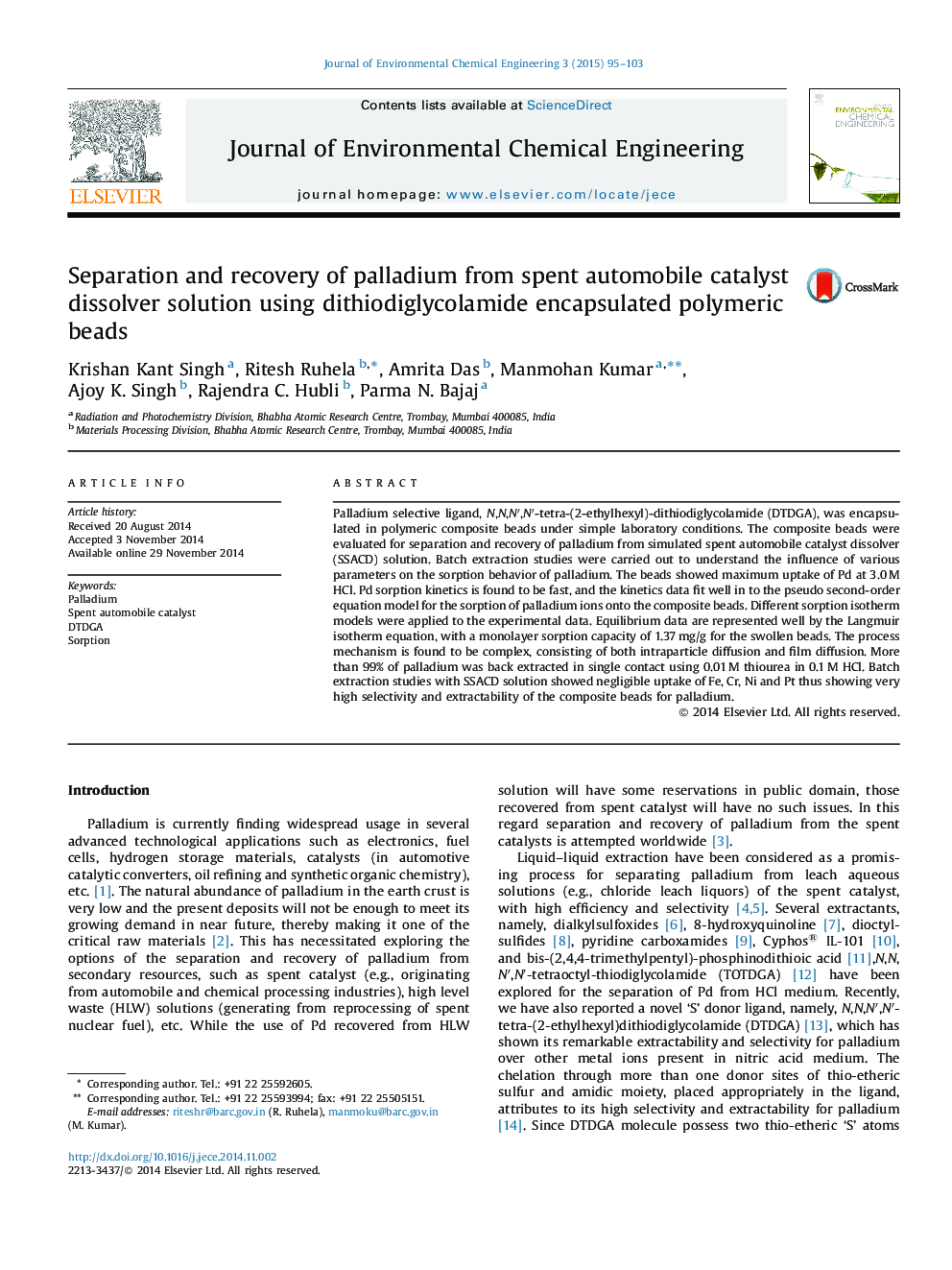| Article ID | Journal | Published Year | Pages | File Type |
|---|---|---|---|---|
| 222388 | Journal of Environmental Chemical Engineering | 2015 | 9 Pages |
•DTDGA beads were evaluated for sorption of Pd from spent catalyst dissolver solution.•Fast sorption kinetics for ‘Pd’.•Very high sorption and selectivity for ‘Pd’ over other metal ions.•Ease of back extraction of ‘Pd’ form loaded resin.•Ease of recyclability and fair stability in HCl medium.
Palladium selective ligand, N,N,N′,N′-tetra-(2-ethylhexyl)-dithiodiglycolamide (DTDGA), was encapsulated in polymeric composite beads under simple laboratory conditions. The composite beads were evaluated for separation and recovery of palladium from simulated spent automobile catalyst dissolver (SSACD) solution. Batch extraction studies were carried out to understand the influence of various parameters on the sorption behavior of palladium. The beads showed maximum uptake of Pd at 3.0 M HCl. Pd sorption kinetics is found to be fast, and the kinetics data fit well in to the pseudo second-order equation model for the sorption of palladium ions onto the composite beads. Different sorption isotherm models were applied to the experimental data. Equilibrium data are represented well by the Langmuir isotherm equation, with a monolayer sorption capacity of 1.37 mg/g for the swollen beads. The process mechanism is found to be complex, consisting of both intraparticle diffusion and film diffusion. More than 99% of palladium was back extracted in single contact using 0.01 M thiourea in 0.1 M HCl. Batch extraction studies with SSACD solution showed negligible uptake of Fe, Cr, Ni and Pt thus showing very high selectivity and extractability of the composite beads for palladium.
